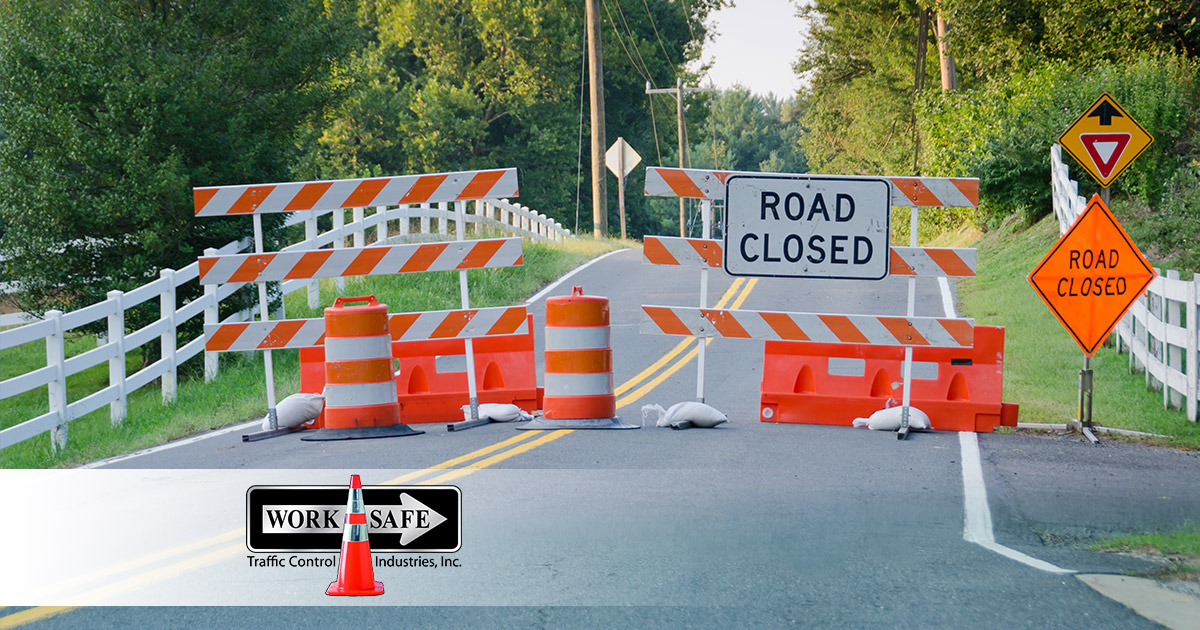
When it comes to maintaining safety in construction zones, roadways, or municipal projects, barricades are essential tools for guiding and protecting both pedestrians and vehicles. Among the most common types used are Type I barricades and Type II barricades. While they may appear similar at first glance, there are critical distinctions between the two that make each uniquely suited for specific applications. Understanding these differences is key to selecting the right barricade for your traffic control needs.
Below, we’ll delve into five primary differences between Type I and Type II barricades, helping you make an informed decision for your next project.
Number of Reflective Panels
The most noticeable difference between a Type I barricade and a Type II barricade is the number of reflective panels.
Type I Barricades: These have one reflective panel positioned on the top rail. This single panel provides sufficient visibility for lower-speed zones or situations requiring minimal traffic diversion.
Type II Barricades: In contrast, these feature two reflective panels, one on the top rail and one on the bottom rail. The dual-panel design enhances visibility, making Type II barricades ideal for areas where higher visibility is critical, such as high-speed roads or during nighttime construction.
The additional reflective panel on Type II barricades ensures they catch the attention of drivers and pedestrians more effectively, especially in low-light or hazardous conditions.
Intended Use and Application
The environments where Type I and Type II barricades are deployed differ significantly based on their design and functionality.
Type I Barricades:
These are best suited for low-traffic areas and short-term projects. Their lightweight design makes them easy to transport and set up, making them ideal for temporary sidewalk closures, residential construction projects, or low-speed rural roads.
Type II Barricades:
These are designed for higher-traffic areas or long-term projects where enhanced durability and visibility are required. Common applications include high-speed highways, urban construction zones, or emergency road closures. Their dual-panel design ensures maximum visibility even in more complex traffic scenarios.
Choosing the right type based on the intended use can significantly improve safety and efficiency in any traffic control setup.
Durability and Material
Both types of barricades are typically made from durable materials such as plastic or metal, but the structural design and weight capacity differ.
Type I Barricades:
These are often lighter and more compact, making them easier to handle and store. However, this also means they may not withstand strong winds or repeated impacts as effectively as Type II barricades.
Type II Barricades:
Thanks to their additional panel and reinforced design, Type II barricades are heavier and more robust. They are built to endure harsher weather conditions, such as high winds, and are better equipped to handle prolonged exposure to heavy traffic. This added durability makes them the preferred choice for areas requiring long-term barricade use.
Weight and Stability
Another key difference lies in their weight and stability, which are crucial factors in traffic control equipment.
Type I Barricades:
These are lighter and more portable, making them an excellent choice for projects requiring frequent relocation of barricades. However, their lightweight nature can sometimes make them less stable in high-wind environments or when subjected to accidental impacts.
Type II Barricades:
With their heavier weight and broader base, Type II barricades offer superior stability, even under challenging conditions. This stability makes them ideal for use in high-traffic or high-speed zones where safety is paramount.
When selecting a barricade, consider the environmental conditions and the likelihood of exposure to wind or collisions.
Cost and Budget Considerations
The final consideration is cost. The difference in design and materials means that Type I and Type II barricades often vary in price.
Type I Barricades:
These are generally more affordable, making them a cost-effective option for projects with smaller budgets or short-term needs. For municipalities or contractors managing temporary closures or lower-risk areas, Type I barricades provide a budget-friendly solution.
Type II Barricades:
While more expensive, their enhanced durability and visibility can save money in the long run, especially for long-term projects or high-risk zones. The added safety benefits of Type II barricades often justify the higher initial investment.
Balancing cost with functionality is crucial for ensuring safety while staying within budget.
Which Barricade Is Right for Your Project?
The choice between a Type I barricade and a Type II barricade ultimately depends on your specific project requirements. Consider factors such as the level of traffic, visibility needs, environmental conditions, and budget constraints. Both barricade types play an essential role in traffic management, and using them correctly can significantly enhance safety and efficiency.
Worksafe Traffic Control Industries: Your Trusted Traffic Safety Partner
Selecting the right traffic control equipment doesn’t have to be overwhelming. At Worksafe Traffic Control Industries, we specialize in providing smart traffic safety solutions tailored to meet your unique needs. With over 25 years of experience serving New England, we offer a comprehensive range of products and services, including:
- Type I and Type II barricades
- Message signs and arrow boards
- Speed signs and microwave technologies
- Trailer-mounted video cameras and queue detection systems
Whether you need equipment for sale or rental, we have a wide selection of durable, high-quality products to ensure the safety and success of your project. From design and implementation to 24/7 maintenance and repair, we provide end-to-end solutions for short- and long-term traffic management needs.
Contact us today for expert guidance and premium traffic control solutions. Let us help you keep your project safe, efficient, and compliant.

